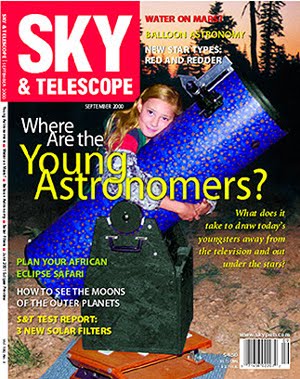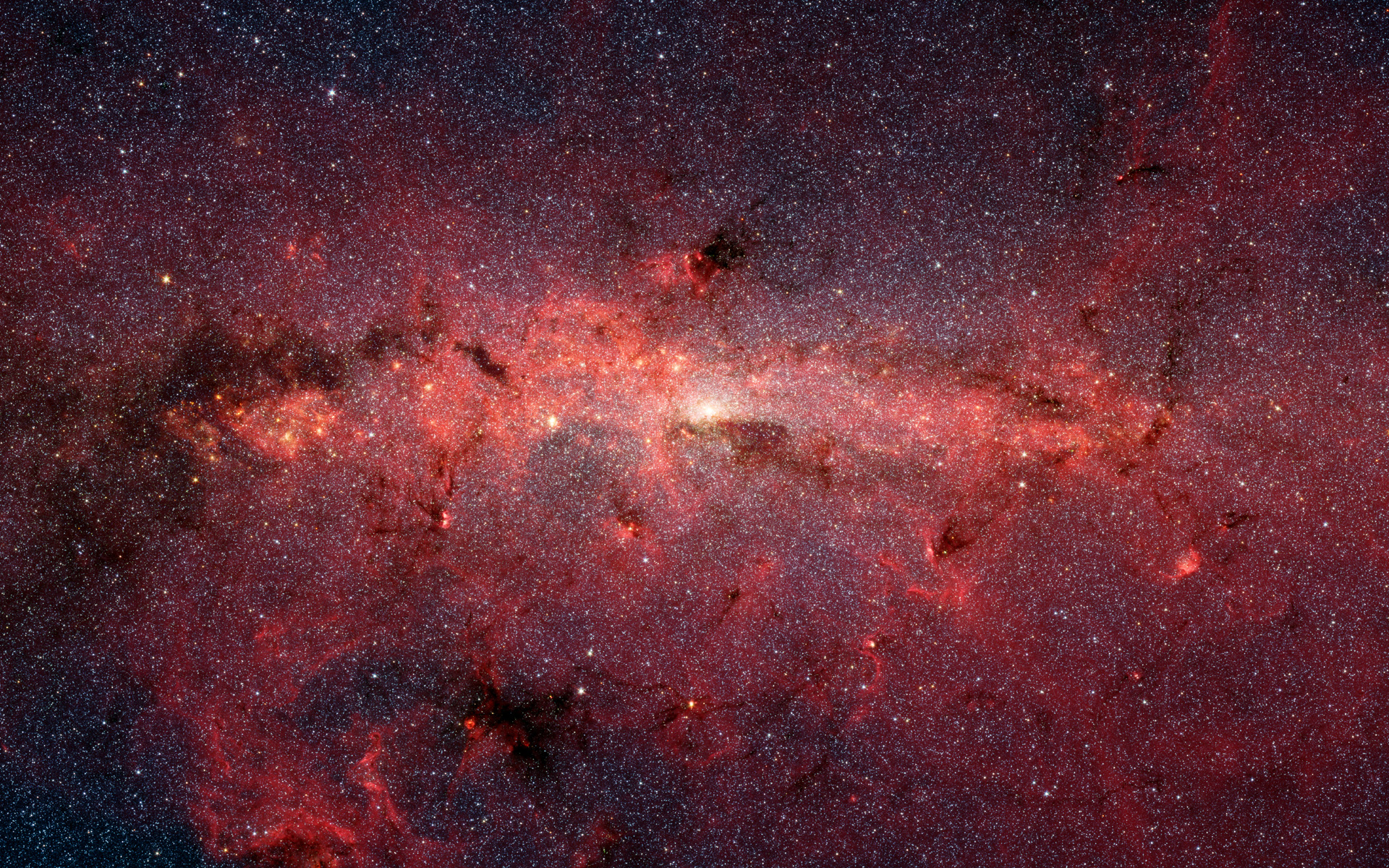Those folks who ventured out to Willow Springs had an excellent night of observing this last Saturday. Our group was split over two locations, Bob Ayers' property atop the hill at 3,000 feet, and Kevin Ritschel's in the valley at 2,200 feet. I was with Steve Gottlieb, Bob Jardine, Bill Cone, David Cooper and Elisabeth Oppenheimer at Kevin's.
As dark set in, I bundled up in multiple layers expecting a very cold night. That never really materialized, temps were reasonable all night, chilling a bit after midnight. The sky stayed quite clear throughout the observing session, although seeing was at times mediocre. Still, it was dark and transparent, and a treat for this time of year. A good gauge of the night was seeing the gegenshein between the Hyades and the Pleiades. Hopefully conditions will improve from the current forecast for late this week and warrant another trip out on Saturday.
At dark I decided to throw out my plans and have a relaxed night observing. It began in a very social manner, no "hard core" list-busting - just relaxed, visiting with friends. It was like the old argument about whether it "tastes great" or is "less filling". How can you lose? I just wanted to take it easy, and "sip a cold one" on a late November night with friends. I hadn't seen Bill in a long time, and I can't recall the last time David and I were set up next to each other. I did observe a handful of targets on my November list... and, later at night teamed up with Steve to break up a few big galaxy clusters...
Observing-LITE... with an 18" Dob...
I began with NGC 40, a great planetary nebula near the Cepheus-Cassiopeia border. With my 7mm Nagler (294x) it showed two bright edges - at the east and west, appeared almost circular and slightly annular, with a bright central star. After Bill mentioned it, I noticed a warmish tone to envelope. When looking carefully, the annular appearance was most pronounced toward the outer edge of the envelope, and near the brighter edges.
I moved on to NGC 7762, a surprisingly interesting open cluster on the Herschel 400-II list, easily located next to a mag 5 star in eastern Cepheus. With a 20mm Nagler (103x) it showed as a very pretty open cluster with several dozen bright stars strewn across a long stretch of dimmer cluster members. The cluster is distinct, and almost rectangular in a mostly nw/se direction. I compared it to a small version of "naked-eye" Milky Way but in a single cluster and eyepiece. Worth a visit. Note a few linear strings of stars in the cluster.
I skipped a few items on my list, deciding instead to focus on targets I thought would either be interesting, or easy. Goodbye to most of the Sharpless stuff. Adios insane Abell Planetary that was seen once 10% of the time in a 24" scope! If I want pain, there's always the upcoming SJAA board meeting! ;-)
I next tried convincing Bill we could see Sh2-171 in my 10x80 finder. He said no, I said yes. BTW... for Navarrete (since he asked me to check it out), I liked Steve's Stellarvue finder a lot more than the archaeological relic I'm using! Here's what I came up with on the target: Visible just north of quadrangle of bright stars, as a large asymmetric glow. The northern edge has a noticeable right triangle of stars in a tight grouping. In a 20mm eyepiece there is a very distinct contrast difference from one side to the other, running N/S next to the triangle. Looking at the DSS image ( http://tinyurl.com/66owym ) the triangle of stars is just to the right of center.
Abell 2 is a dim planetary nebula in such an easy to hop to location, anyone with interest in trying it should. Check it out - right on a constellation "figure" line in Cassiopeia and just west of the notable double star Eta Cass... its position is made to order. In my 12mm Nagler, I picked it up without a filter as a dim roundish glow, using averted vision. With the 7mm and OIII - round without much differentiation, potentially some annularity.
This next one is contestable. Go ahead, nay-sayers, sling your arrows. Sh2-176 is a very dim and large planetary. See these images ( http://tinyurl.com/6mx9nv ). Here are my notes: 20mm OIII suspected, with 12mm and OIII filaments appear and disappear with averted, - arc along the NW edge, knot in the SW edge. OK... so I did a toughie.
Another dim planetary? Well, its not all *that* dim.... Abell 82 is located in Cassiopeia very near the beautiful open cluster NGC 7789. What a great contrast in objects between the two! Visit both when in the area. With my 12mm and OIII the Abell was visible dimly as fairly large uneven glow with, with an easy to pick out central star. My sense is that the western half of the planetary was the most visible.
With that, I was through with planetaries for the night. What a relief, on to easy targets - Arp 112 in Pegasus! With a 7mm I resolved two galaxies of almost equal magnitude, the eastern-most (NGC 7806) with a NE/SW elongation, other (NGC 7805) is mostly N/S. 7805 has mag 12 star overlaying and appearing to be a stellar nucleus. What a nice pair!
Arp 113 is awesome looking, on paper (or in a planetarium program). Check it out. With the 7mm eyepiece I could pick out 7 galaxies in tight group dim group. Clumpy. The group is dominated (can you say that for dim galaxies?) by NGCs 70, 71 and 72. Seeing was marginal at the time, so that's all there is to this one.
Arp 46? OMG, another Arp. Where is the easy stuff? 7mm - UGC 12665 obvious as large amorphous glow, UGC 12667 is significantly dimmer and amorphous. Alvin Huey had observed these in a larger aperture, and higher power, and noted there is an "A" companion (which he did not detect)... but I don't see it in Megastar or The Sky... anyway, 12667 was in and out with averted vision.
Argh.... another Arp! Arp 86 is in Pegasus and is not too tough. With a 7mm 7753 shows spiral structure with possible bar e/w (heh.... just looked at the DSS image, yeah!), NGC 7752 is small elongated glow. 7753 is big and bright.... go for it!
In order to flog myself even more thoroughly, I moved away from the Arps, and moved on to Hickson 99. UGC 12899 is the brightest member of five in this group, at mag 14.7. In my 7mm only the A and B (UGC 12897 and UGC 12899) were visible. With enough "watching" I felt a B had notch possibly showing, which would be the C component at mag 15.7.
I also observed two rich galaxy clusters with Steve, Abell 400 in Cetus and the NGC 80 group Andromeda. We would locate the brightest member of the cluster, and work in distinct directions off it, pulling in IC, CGCG and MAC galaxies down to the mid mag 16 range. 16's were well within reach, once we went dimmer, things got tough quickly. I estimate we pulled in close to 30 members of Abell 400, and 25 targets in the NGC 80 group. I'll let Steve chronicle exactly what we saw, I decided to just enjoy the trip and leave the note-taking to the most experienced hands. Observing like this with such a capable observer is always a treat.
Lastly, I'll note a few other targets that were fun in my scope and others.
I had a rockin view of The Horsehead Nebula in my 18" with the 12 Nagler and an H-Beta filter. Black notches don't get any darker or more distinct. The contrast difference on along the edge of IC 434 was very dramatic.
We had a very interesting view of the Sculptor Dwarf Galaxy in Steve's 18", I think pretty much everyone looked at it - this target was large and shown itself as an elongated brightening that was not much more than a change in contrast - but it was there.
Bill Cone called me over to look at Burbidge's Chain off of the big galaxy NGC 247. We pulled in 3 members. Second time I've seen this group. Bill also had nice views of Neptune and its big moon Triton - nice color - similar to the color we saw viewing the Saturn Nebula in Capricornus (coincidentally, the constellation in which Neptune was discovered!).
David Smith was set up with his 6" f/7 Astrophysics refractor pulling in great views of large objects like the entire sweep of M42 (and M43, and The Running Man, and NGC 1981.... awesome!) and the hands-down best view I've had of the California Nebula in a 2.7 degree field!
It was also a lot of fun to have the enthusiastic Elisabeth sharing views, and wowing herself over the great skies and how well targets were popping out in the 8" Dob she was using.
The one thing that was as it always is, was Jardine. The man is an observing monster, a photon munching machine. Other than when he was looking through Steve's scope at The Sculptor Dwarf (and were you guys looking at the WLM too?)... you wouldn't ever know he was there... glued to his eyepiece throughout the evening.
It was a great night. And if I had to choose, tastes great won. It was not a less filling evening, I was very full by the end! So much for Observing-LITE.
Thanks to all my friends who made it so much fun... and Kevin... thanks again for being such a generous host. I hope Dobzilla feels better soon. Feed the beast!












No comments:
Post a Comment